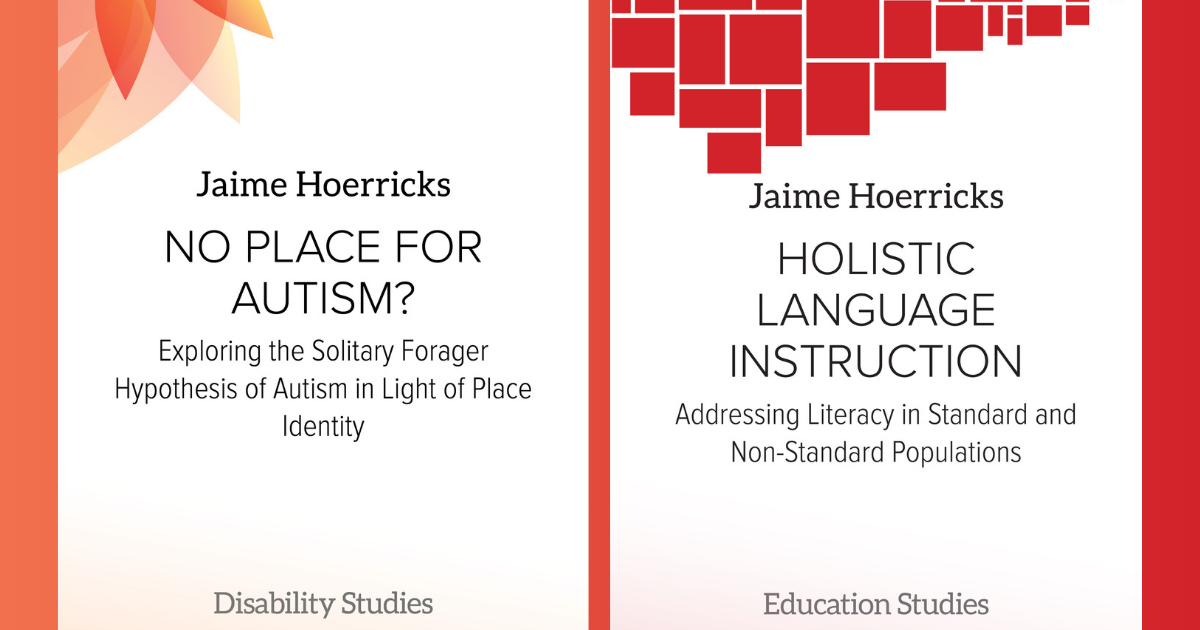The pandemic was a watershed moment in my life. In 2016, I had retired from a public service career to go into private practice as an independent forensic scientist. When the pandemic hit in early 2020, and the court system shut down, I was suddenly out of work. There was not a hint or clue as to when the system would restart. With minimal savings and preparation, I was forced to decide: keep throwing my dwindling savings at keeping my business afloat against no revenues, or choose a different way to earn a living.
I chose the latter.
I sent out hundreds of resumes to companies far and wide. I scoured the job boards. Months of activity yielded one interview for a job that I didn’t get. I wondered if checking the “disabled” box was wise. But I remembered reading stories of people who didn’t disclose their disability up front, who were later denied necessary accommodations once hired. I wondered if my disability was keeping me out of the workforce. I wondered if there was a place for me.
Finding Teach for America
One morning, I noticed an ad on LinkedIn for Teach for America. They were looking for people to join the teaching profession and make an impact in the lives of the most vulnerable students. I thought about my journey in life, and my current lack of employment, and clicked on the “more information” link. To my eternal surprise, someone actually responded.
With a PhD in Education and two master’s degrees, I was in a decent position to enter the teaching profession. Despite this, during each step of the process in joining Teach for America, I thought there would be no way they would accept me with all my autistic baggage. As I successfully passed each step, I still wondered what disappointments lay ahead. Surely, in this world, there would be no place for me at the end of this application journey. I was wrong.
I couldn’t relocate to a high need area. It turns out, I was already living in a high need area. They couldn’t accommodate my request to teach social studies. But they thought that my education and background (my lived experience) made me perfectly suited to become a Special Education teacher. They even promised to get me hired into the local school district. With all of that, I was on my way to becoming a teacher.
Autism training not for autistic people
As an autistic person changing careers in the middle of a pandemic out of economic necessity, it was a terrifying time. The Teach for America Induction staff were great, but they were wholly unprepared to have a high-need autistic candidate in their midst. Their video conferencing tool didn’t support captions (a must for those like me with audio processing delay), and their slides showed pictures of text rather than actual text that would be accessible to my text-reading tools. It got better over time, but those first months were terrible.
I was eventually hired as an elementary Special Day Class teacher for mild/moderate need students and those with or at risk for emotional disorders. As a new Special Education teacher, I had to undergo the District’s onboarding. What an ordeal.
I can easily say that the experience was demeaning and degrading. Imagine having your life explained to you by someone who knows nothing about you, but is operating under the unshakeable belief that they know everything about you and people like you. Not only that, but the whole training was delivered from the standpoint that if new teachers follow the provided guidance, then these pesky, high-needs people will be easier to deal with. It was as if there was no place for autistic students in this District. Being autistic was framed as a tragedy; one that would hopefully be remedied for good and all.
I attempted to push back from the standpoint of my lived experience and my research. But in this dystopian Taylorist nightmare, I was counseled that these trainings were monologs, not discussions. Further to the point, I was told that the speaker did not appreciate my pushing into the discussion, that she had a son who had autism, and thus she was an expert. As a new teacher, I should know my place, listen, and speak when bidden to do so. As the final touch, I was told to consider the discussion as my “verbal warning” against such behaviour. Any further outbursts could see my career end before it really began.
In that professional development session, the discussion of dealing with people with autism, it was assumed that an autistic person wouldn’t be present as a colleague. These sessions were not designed with people like me in mind. If the new teachers followed the speaker’s advice, the theory went, people like me would learn to “behave like normal” and thus not cause problems in class.
Let’s just say it took quite a while to get over those devastating eight hours.
Autism as a problem to be solved
You see, in America, when a child is evaluated and found to be autistic, the clinics provide the parents with an array of service recommendations from their business partners. Typically, the clinics encourage the parents to sign their autistic child up for occupational, speech, and behavioural therapy sessions.
When time passes, and parents don’t see an improvement, they seek other “therapies” to “treat” their autistic child. Often, parents are not prepared for the enormous costs involved in such treatments. But, as loving parents, they find a way to pay for all the care they’re told their child needs to make it in this world.
Lurking in the background of this discussion is a little discussed fact. “Treating” autism is big business.
According to the research site Statista, the “economic burden of autism spectrum disorders in the U.S.” was estimated to cost around 268 billion dollars in 2015. This figure is forecast to increase to around 461 billion dollars by the year 2025. From where will all that money come? In the US, it will come primarily from the federal budget and overburdened families.
The Autism Collaboration, Accountability, Research, Education and Support Act (Autism CARES) is the primary source of federal funding for autism research, services, training, and monitoring in the US. According to Rep. Chris Smith, R-N.J., who authored the legislation, this “comprehensive new law … will fund critical biomedical autism research as well as the development of best practices to enhance the lives of persons with autism,” he said. “We need answers now and treatment options and interventions that work.”
One of the agencies that will receive funding from the Autism CARES Act is the Dept. of Health and Human Services (US HHS). Within the US HHS is the National Institutes of Health (NIH).
The NIH describes autism as “autism spectrum disorder (ASD) refers to a complex group of generally lifelong developmental disorders, usually diagnosed in childhood. Characteristics of ASD may include problems communicating; difficulty relating to people, things, and events; repetitive movements or behaviors; and difficulty adjusting to unfamiliar surroundings or routines. ASD is called a “spectrum” disorder because it can cause very different symptoms. Some people have mild symptoms and others have much more severe ones. Estimates of autism vary and prevalence studies in the United States have looked only at children, but the most recent U.S. Government statistics estimate that about 1 in 68 children has ASD. It’s 4.5 times more common among boys than girls.”
When doctors refer to something as a disorder, they mean “a disruption … to the normal or regular functions in the body or a part of the body.” For example, a disorder resulting from cardiovascular disease is an arrhythmia or irregular heartbeat. Treatments for such a disorder would include changes in diet, increase in exercise, and a regime of medication. Proof that the treatment was successful, that the disordered system has been returned to regular order, would be seen in the diagnostic results of tests like the Electrocardiogram (ECG).
The Diagnostic and Statistical Manual of Mental Disorders (DSM), Fifth Edition – Text Revision, is the 2022 update to the DSM, the taxonomic and diagnostic tool published by the American Psychiatric Association (APA). In the United States, the DSM serves as the principal authority for psychiatric diagnoses. Treatment recommendations, as well as payment by health care providers, are often determined by DSM classifications.
The problem begins with the APA’s declaration that the autistic brain is a disordered “normal” brain. The APA assumes a baseline “normal” then assigns the term “disorder” to those things that do not operate according to their agreed upon definitions and baseline.
In its press conference, held after US President Trump signed the Autism CARES Act into law, Autism Speaks noted, “This funding primarily supports autism research grants awarded by NIH which advance the scientific understanding of autism, expand efforts to develop treatments for medical conditions often associated with autism, and address the needs of people affected by it. The NIH Autism Centers of Excellence also fosters collaboration within and among research centers, increasing the power and efficiency of their efforts.”
Now, let’s assemble these quotes to synthesize the common threads. According to the various US government health agencies and departments, the APA, and Autism Speaks, what we know as autism needs treatment that leads to a cure so that autistic people will no longer negatively affect their families and their communities. Not to alleviate suffering, but to reduce the negative impact of autistic existence on the people around them. Consider what that statement says to someone who happens to be autistic – like me.
Nevertheless, the NIH notes that “no cure has been found for ASD.” It goes on to note that “many parents try complementary health approaches, usually along with conventional medical care, for their children with ASD,” ignoring the fact that “there’s very little high-quality research on complementary health approaches for ASD.”
Treatment for autism, or treatment of autistic people?
But let’s shift directions here. We’ve been considering “treatment” from the medical standpoint, “medical care given to a patient for an illness or injury.” Given the complexity of the English language, what happens to this conversation if we use an alternative definition of “treatment?” “Treatment” can also mean, “the manner in which someone behaves toward or deals with someone or something” – as in, “Title IX’s directives required equal treatment for men and women.”
Thinking in this way, we move away from the medical world, and the potential for unethical and harmful modifications to the essence of what makes us uniquely us, towards a behavioural value statement – a way of proceeding.
Let’s unpack that statement – autism as a way of proceeding.
Ways of proceeding are certain attitudes, values, and patterns of behavior that join together in the person and are part of their presentation of their authentic selves to the world.
The characteristics of our way, the autistic way of proceeding, are shared by most who find themselves diagnosed, or self-diagnosed, as being “on the spectrum.”
The following characteristics can be included in our way of proceeding:
- A deep personal love for / connection with our particular interests
- Contemplative in our actions
- Highly self-directed in our learning
- Technologically enabled solidarity with those who share similar interests, withersoever dispersed around the globe
- Highly empathic (alexythemia)
- Ever searching for the magis (more) – or excellence in all our endeavors
When it comes to our pursuits, when working towards our Quality World Picture, mediocrity has no place in our worldview. But our measurements aren’t artificial, judging our progress against some checklist or the accomplishments of a peer or age group. Our measurement is our position in space and time relative to our desired destination, as represented by our Quality World Picture.
Parents and medical professionals often look upon autistic behaviour as problematic, and sometimes harmful. They see “treatment” as a way to change that behaviour “for the better” – with “the better” being measured externally by someone other than the patient.
You can certainly see this in ABA. But they often fail to recognize that the behaviour is an attempt at communication. Thus, in stopping the behaviour, they’ve interrupted the attempt at communication – which can have tragic consequences.
Therapists and doctors, schooled in theories like Maslow’s Hierarchy of Needs, apply inappropriate templates to autistic behaviour when trying to decipher what they see presented to them in a clinical setting. It’s ironic that the quote, “To the man who only has a hammer, everything he encounters begins to look like a nail,” is attributed to Maslow.
This is exactly what’s happening in the clinical setting. Doctors, trained to spot and treat disorders, are labeling everything they don’t understand as disordered. They don’t understand the autistic system as designed, they don’t understand autistic communication, and they certainly don’t understand the autistic Quality World Picture.
They don’t understand that Maslow’s Hierarchy of Needs is not as relevant to the autistic way of proceeding as Glasser’s Choice Theory. Where they see repetitive behaviours or fixation, autistic researchers see a teleological way of processing time relative to one’s Quality World. You see, whilst Maslow’s Basic Human Needs can be seen as the general motivation for the average human’s behavior, one’s Quality World is the specific motivation of the specific person. The Basic Human Needs describe what we need in general, the Quality World pictures detail how we as individuals meet those needs. The Basic Human Needs are universal; our Quality Worlds are unique.
According to Glasser, the pictures in our Quality World:
- Meet one or more of our Basic Human Needs
- Are changing and changeable
- Are unique
- Often conflict with each other
- Vary in levels of intensity
- Vary in levels of attainability
Consider again the typical therapy or behavioural treatments that are given to autistic people.
The therapists / doctors often ask questions like:
- Who are the most important people in your life?
- What are your most deeply held values?
- If you become the person you would ideally like to be, what traits or characteristics would you have?
- What is an accomplishment that you are really proud of?
- If you could have the perfect job, what would that be?
- If you were independently wealthy, what would you do with your time?
- Describe a time in your life you would call a peak experience.
- What does it mean to be a friend?
- What is brings a significant amount of meaning to your life?
- What, for you, makes a house a home?
… but they ask these questions of the parents or care givers, robbing the autistic person of their agency. The answers given are framed like those provided above, from Autism Speaks, to “address the needs of people affected by [autism].” Thus, the treatments seek to restore to order the disorder in the parent’s / care giver’s life – not to respectfully approach and accommodate the autistic person’s way of proceeding.
I do not need a cure for being autistic
Moving forward, I would love to see the focus permanently shift away from trying to “cure” me of what makes me uniquely me. I would love to see the focus be on those attitudes, values, and patterns of behavior that join in me and that are part of my presentation of my authentic, unmasked, autistic self.
Rather than “treat” me, or “cure” me, why not focus on the reasons why society believes it needs to rid itself of me. Why is there no place for me here? Am I of such little value to the world that the world would be better off if I wasn’t around anymore, or never born in the first place?
Of course not. I’m pretty awesome when you get to know me. You can see the absurdity in my questions. Do you see the tragic ridiculousness in the statements enshrined in the laws just passed, or in the press releases crowing about the additional funding noted above?
Let’s move on from “treating” or “curing” what we don’t understand. Let’s move towards understanding, accepting, respecting, and loving all of humankind’s wonderous variety.
Let’s not “standardize” creation. How boring would that be? Let’s embrace the amazing biological diversity that we find around us.
Back to the present. I’m now in my third year of teaching. I’m moving into that stage of my career where I attempt to prove to the system that I’ve grown as a teacher and am worthy of continuing. This process in California is called “Induction”, or clearing one’s credential. I’m also at a different school. Now, I’m a Resource Specialist Teacher at a high school that features Inclusion of students with IEPs in its general education classrooms. In these three years as a teacher, I’ve managed to carve out space to be my authentic autistic self. I’m open with my colleagues and students about who I am and the problems I face each day. I think that authenticity helps me to connect, something that we autistics are often accused of not being able to do. Ironic, isn’t it.
Jaime Hoerricks PhD (she/they) is a non-verbal autistic advocate, researcher, educator, and author. She is based in California, US, and currently works as a special education teacher.
She has two books published with Lived Places Publishing:
- No Place for Autism? Exploring the Solitary Forager Hypothesis of Autism in Light of Place Identity
- Holistic Language Instruction: Addressing Literacy in Standard and Non-Standard Populations
And a third one forthcoming: Decolonising Language Education: Reframing English Language Development for Multilingual and Neurodiverse Learners (Oct 2025).
We want our books to be available to as many people as possible. If you’d like to purchase an individual copy, please email us and we’ll give you a discount code:
HEADER IMAGE CREDIT: Jaime Hoerricks




I wish you could be my 5-year-old granddaughter’s Speech Therapist! She lives in San Diego with my daughter and son-in-law. My daughter is an RN who has taken off from work to be able to be actively involved with her treatment, she has commented that my granddaughter’s therapist has only had minor exposure to any GLP courses and training a topic you raised in your article. In closing thanks for the insight, it has helped me understand my granddaughter a little better and that’s what I was hoping to get out of it.
Thanks for the kind words. Much of what I wrote about in this post has been incorporated into Holistic Language Instruction – available in the Education Studies collection here. It’s worth noting that individual SLPs can be, and are amazing. But they don’t function as literacy specialists. Thus, Holistic Language Instruction was written to inform classroom teachers about GLP literacy, and how to address literacy in mixed GLP / ALP classrooms.
Very energetic article, I loved that bit. Will there be a part 2?